#bartlebooth
Explore tagged Tumblr posts
Note
oh, i wonder if this *specific* work of erasure is what inspired bartlebooth's much more comprehensive act of personal erasure in georges perec's life: a user's manual
what is funny about ad Reinhardt and yves Klein? i want to be let in on the joke
so yves klein was a color field painter, also known as those guys who just paint a canvas blue, all blue, all the same color of blue, and sell it for a shitton of money. actually when it came to blue, yves klein was kind of The Guy.

BLUE
but back before all the fame and the blue, he made “yves peintures,” which was a catalog of his monochromes, pictured here:

the joke is that it’s bullshit! it’s just squares of construction paper glued on the page with little titles written below them. even the preface isn’t a preface – it’s just horizontal lines that he had a buddy of his sign with his name. one time yves klein and his art pals all hyped up a big big gallery show that he was opening. a solo exhibition! very exciting! all the critics and fancy motherfuckers showed up – three thousand people came. with great drama, they were led into a completely empty gallery. “welcome,” yves klein said. “I call it THE SPECIALIZATION OF SENSIBILITY IN THE RAW MATERIAL STAT INTO STABILIZED PICTORIAL SENSIBILITY, LE VIDE (THE VOID).” he was, in every way, a total fucker who loved bright colors and pranking the art world.
meanwhile, ad reinhardt – what’s ad reinhardt’s gig?

ad reinhardt’s gig is BLACK
more specifically, black-on-black grids of very slightly varying shades of black, applied in a very matte, powdery way that left the paintings with almost no sheen. it’s a pretty cool effect in person (if vantablack 2.0 had been a thing in the 50s, ad reinhardt would have busted a nut)
unfortunately, the way he did the paint makes the paintings incredibly difficult to maintain. if you touch one, the oils on your hands will immediately stain the painting, and it can’t be cleaned or repaired.
“no prob, bob,” ad reinhardt said to the flustered museum curators and collectors. “if you mess it up i’ll just replace it.”
“but what about our original ad reinhardt!” said the curators and collectors
“yeah i’ll replace it,” ad reinhardt said, “with the same original painting but not fucked up.” this caused some consternation
incidentally, he also made this small comic, which never fails to tickle me:

YOU, SIR, ARE A SPACE TOO!
one of my real favorite artworks in this vein is by robert rauschenberg, and i’m going to include the story of it because it makes me very happy. rauschenberg was an insane post-modernist – one of his most famous pieces includes a taxidermy goat with paint thrown all over it and a car tire around its neck, that kind of thing – and i love his piece titled “erased de kooning drawing”
so willem de kooning was the husband of elaine de kooning, who painted sick abstract expressionist portraits and was slamming hot

wow
willem was also an artist, and kind of a big deal in his own right, and friends with rauschenberg
one day rauschenberg calls him up like “hey i have an idea for a collaboration between us two art bastards. i need you to do me a drawing, in pencil”
and willem said “why”
and rauschenberg said “wouldn’t you like to know”
and willem said “why”
and rauschenberg said “because i’m gay, give it”
and willem said “that’s not a reason”
and rauschenberg said “fine, i wanna make a commentary on the value of art even after it’s destroyed and palimpsests and ephemerality and shit i guess, so i need a drawing by a famous dude to erase, and you’re famous”
willem de kooning said “okay” and proceeded to find the wettest, most difficult to erase grease pencil in his studio, which he then used to make several drawings until he came up with one he liked and sent it to rauschenberg
and to his credit, rauschenberg erased that motherfucker. he put in the effort. in a spectacular show of spite countering spite, he very nearly got rid of it all. look at this shit:

if that almost-blank piece of paper isn’t a work of art, i don’t know what is
37K notes
·
View notes
Text
Sometimes Valène had the feeling that time had been stopped, suspended, frozen around he didn’t know what expectation. The very idea of the picture he planned to do and whose laid-out, broken-up images had begun to haunt every second of his life, furnishing his dreams, squeezing his memories, the very idea of this shattered building laying bare the cracks of its past, the crumbling of its present, this unordered amassing of stories grandiose and trivial, frivolous and pathetic, gave him the impression of a grotesque mausoleum raised in the memory of companions petrified in terminal postures as insignificant in their solemnity as they were in their ordinariness, as if he had wanted both to warn of and to delay these slow or quick deaths which seemed to be engulfing the entire building storey by storey: Monsieur Marcia, Madame Moreau, Madame de Beaumont, Bartlebooth, Rorschach, Mademoiselle Crespi, Madame Albin, Smautf. And himself, of course, Valène himself, the longest inhabitant of the house.
Georges Perec, Life: A User's Manual, trans. David Bellos
0 notes
Text
instagram
ArtsLibris MACBA Barcelona 15/16/17 Novembre 2024
ArtsLibris Barcelona, Fira Internacional del Llibre d’Artista, el Fotollibre i l’Autoedició, tindrà lloc els dies 15, 16 i 17 de novembre al MACBA, Convent dels Àngels.
Enguany, amb motiu del 15 aniversari d’ArtsLibris, volem convidar-vos a participar en aquesta edició tan especial.
ArtsLibris esdevé una oportunitat única per presentar al públic el vostre projecte editorial i trobar-vos amb companys i companyes del sector professional, amb l’objecte d’establir les sinergies necessàries per fer créixer el teixit cultural del nostre entorn.
Els espais on s’ubicaran els estands seran: Capella, Espai Fòrum i Sala Gòtica. Les jornades de Seminari i Speakers’ Corner es duran a terme a l’Auditori del Covent.
LLISTAT D'EXPOSITORS ARTSLIBRIS MACBA BARCELONA 2024
13L edicions (Barcelona) · 42 Líneas – Escuela de Arte de Oviedo (Oviedo) · 51 Personae (Shanghai) · Actes Sud (Paris) · Àfriques Edicions (Sant Cugat del Vallès) · Ajuntament de Barcelona (Barcelona) · Al-Tiba9 Contemporary (Barcelona) · Alejandra Morales (Barcelona) · Alias (Ciudad de México) Amagats (Barcelona) · Amen&Co (Portal Nous) · Amigos Eloi Gimeno (Barcelona) · ANCEL Franck (Paris) · Animales de Lorca (Valencia) · Arcàdia (Barcelona) · Archive Books (Berlín) · Artlecta (Guadalajara) · Artphilein Editions (Paradiso) · ArtsLibris Serie AL (Barcelona) · AVARIE | Labor Neunzehn (Paris) · Banc Sabadell (Barcelona) · Barcelona Llibres (Barcelona) · Bartlebooth (Lugo) · Bernard Gabriel Lafabrie (Paris) · Blueproject Foundation (Barcelona) · Bonart (Barcelona) · Bored Wolves (Cracovia) · By Publications (Barcelona) · Cadaqués Photo (Cadaqués) · Caja Negra Editora (Buenos Aires – Madrid) · Can Grapes & Bea Janer (Nevà) · Candelaria Magliano/Punto Rosso (Pontevedra) · Carmencita Editions X Book and sons (Valencia) · Casa de Velázquez (Madrid) · CCCB Centre de Cultura Contemporània de Barcelona (Barcelona) · Centre d’Art Tecla Sala (L’Hospitalet de Llobregat) · Centre d’Arts Santa Mònica (Barcelona) · Centro de Arte Fundación María José Jove (A Coruña) · Cuscusian+s (Girona) · De La Pulcra Ceniza (Barcelona) · Dalpine (Madrid) · Delpire & CO (Paris) · DÈRIA (Barcelona) · Direcció de Serveis Editorials | Ajuntament de Barcelona (Barcelona) · Écho 119 (Paris)· Ediciones Anómalas (Barcelona) · Ediciones Comisura (Madrid) · Ediciones Originales – Antonio Zúñiga (S.Mª Palautordera) · Ediciones Posibles (Barcelona) · Ediciones Raúl (Buenos Aires) · Edicions del bosc (Terrassa) · Editions Odyssée + Silvia Prió (Paris – Mallorca) · Editorial Concreta (Valencia) · Editorial RM (Barcelona) · EDIZIONI CASA FALCONIERI (Cagliari) · El Naufraguito (Barcelona) · escriptum (Valencia) · Escrito a lápiz (Madrid) · ESDAPC. Assignatura Disseny Editorial (Barcelona) · Espe Pons (Barcelona) · Eva Pujol (Vic) · EXIT (Madrid) · Fabra i Coats: Centre d’Art Contemporani de Barcelona i Fàbrica de Creació (Barcelona) · Fabulatorio Books (A Coruña) · Fundació Art i Paraula (Barcelona) · Fundació Joan Miró (Barcelona) · Fundació Mies van der Rohe (Barcelona) · Fundació Vila Casas (Barcelona) · Fundación TBA21 | Thyssen-Bornemisza Art Contemporary (Madrid) · Gaspar Warehouse (Barcelona) · Georgina Aspa
14 de novembre 2024 Seminari ArtsLibris MACBA Barcelona 2024 Llibres per a pensar la imatge contemporània
12.00h-13.30h / Taula 1: Edició i disseny. Tifanny Jones. Fundadora de Overlapse, un segell de fotollibres amb seu a Londres que va començar en 2015 mentre investigava la «Dinàmica del mercat dels fotollibres» per al seu màster en Edició en la Universitat Oxford Brookes.
Alex Llovet. Fundador i editor d’Ediciones Posibles, segell especialitzat en fotollibres. Va estudiar humanitats a la UAB, direcció cinematogràfica, i fotografia a l’IEFC. Ha publicat set fotollibres i una novel·la que han obtingut numerosos premis nacionals i internacionals.
Modera Natasha Christia. Fotògrafa i directora de la Galeria Kowasa. És investigadora de cinema i programadora audiovisual.
16.30h-18.00h / Taula 2: Pensament i imatge. Ingrid Guardiola. És doctora en Humanitats per la Universitat Pompeu Fabra, professora de la Universitat de Girona, assagista, realitzadora audiovisual i investigadora cultural. Des de maig de 2021 és la directora del Bòlit – Centre d’Art Contemporani de Girona.
Jose Luis Neves. Expert en fotollibre, comissari de la Belfast Exposed Gallery, a Irlanda del Nord, i professor titular de fotografia en la Universitat de Northampton i la Universitat de l’Ulster, el Regne Unit. Entre 2010 i 2012 va treballar en el Wilson Centre for Photography de Londres com a comissari assistent.
Modera: Ángela Molina. Filòloga i historiadora de l’art, llicenciada en Filologia espanyola i doctora en Teoria de la literatura i literatura comparada per la Universitat Autònoma de Barcelona (UAB) i està especialitzada en teoria feminista i estudis de gènere.
18.30h-20h / Taula 3: Imatges per a ser dialogades. Ponència performativa Toni Amengual. Fotògraf independent, artista conceptual i editor de fotollibre. Joana Hurtado. Crítica d’art i cinema, i comissària independent.
dd
dd
Este nuevo ensayo de Javier Maderuelo parte del reconocimiento de una evidencia: «buena parte de los artistas del siglo XX no se dedicaron solo a realizar obras de arte, sino que al extender su producción creativa experimentando con nuevos formatos, materiales y técnicas, han generado una variada producción que hasta ahora era situada en los márgenes del “gran arte”... Muchos artistas se han convertido en editores de su propia producción impresa, han dirigido y producido revistas de artista y han realizado obras seriadas y múltiples... Si un cartel, un programa o una invitación han sido diseñados, estampados y manipulados por los propios artistas, las cualidades estéticas de esos productos que por lo general no se suelen apreciar como “obras de arte”, no dejan de tener interés artístico». En las páginas de Arte impreso, Maderuelo no tiene la voluntad de «inventar» un nuevo género, pero sí plantea una categorización de este tipo de materiales, una ordenación distinta a la que la historiografía tradicionalmente ha aplicado a las «obras de arte», ordenación condicionada por los avatares del potente y próspero comercio del arte. Maderuelo, define, analiza y establece en este nuevo trabajo hasta una docena de tipologías del llamado «arte impreso»: Libros de artista y obras-libro (bookworks), catálogos de exposiciones, publicaciones periódicas (revistas), fanzines, assemblings, múltiples, monotipos y series, la condición efímera (tarjetas), carteles, los impresos en el arte postal, proyectos y trabajos en los márgenes de lo impreso.
0 notes
Text
‘Kinderscènes’ van Valery Larbaud: de duistere zijdes van de kindertijd
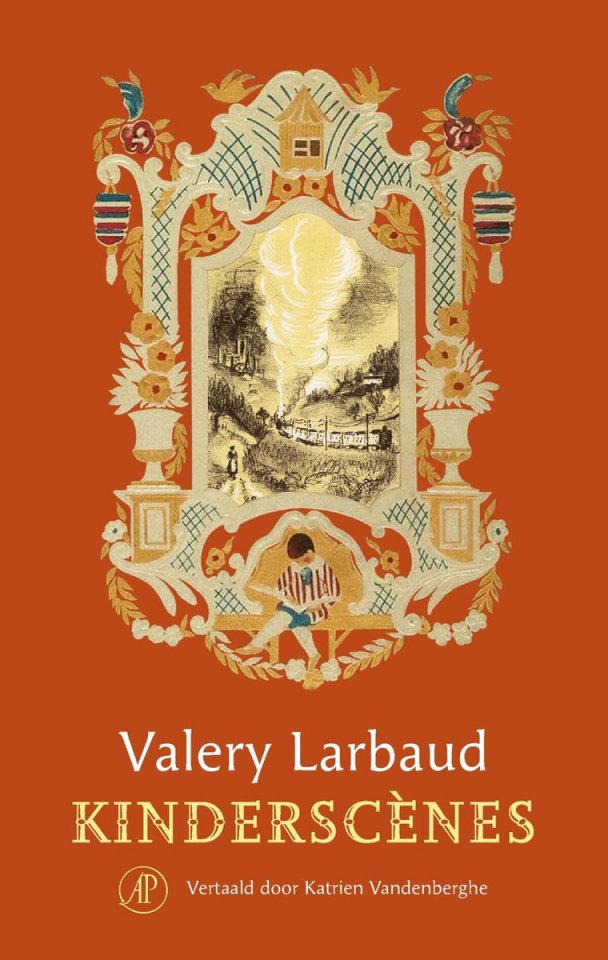
Voor het eerst zijn de Enfantines (1918)van Valery Larbaud (1881-1957) integraal naar het Nederlands vertaald. André Gide roemde de ‘pure tover’ van deze nostalgische jeugdherinneringen uit de belle époque, en ook Marcel Proust was een hevig bewonderaar. Kinderscènes bundelt negenmesscherpe vertellingen, die de lezer meevoert naar gene zijde van een ogenschijnlijk onschuldige kindertijd.
Sleutelfiguur en geheim agent
Bij de verschijning van Enfantines in 1918 was Larbaud al een sleutelfiguur in de vooroorlogse letterkunde. Cocteau noemde Larbaud in een hommage-editie van de Nouvelle Revue Française (1957) ‘un agent secret des lettres’. Naast de auteur van romans, novelles en verhalen was hij een begenadigd essayist, een onvermoeibaar vertaler (hij sprak 6 talen vloeiend) en de bevlogen pleitbezorger van ‘nieuwe’ schrijvers zoals Jorge Luis Borges, Comte de Lautréamont, William Faulkner, Italo Svevo en James Joyce. Zo introduceerde hij in Frankrijk middels zijn vertalingen bijvoorbeeld het werk van Samuel Butler en Walt Whitman, en begeleidde de Franse vertaling van Ulysses, in samenspraak met vriend Joyce en vertaler Auguste Morel, een vertaling die bovendien vrij lang als standaard heeft stand gehouden.
In 1908 debuteerde hij met Poèmes d’un riche amateur ou oeuvres françaises de M. Barnabooth, onder het pseudoniem Archibald Olson Barnabooth. Deze bundel in een oplage van amper 200 exemplaren bevatte een vijftigtal gedichten, een fictieve biografie van de mondaine, puissant rijke Zuid-Amerikaan Barnabooth en de novelle Le pauvre chemisier (vertaald door E. du Perron als ‘De arme hemdenmaker’). In 1913, bij het verschijnen van A.O. Barnabooth, Ses Oeuvres Complètes, een soort vervolg op de eerste publicatie, werd duidelijk dat Larbaud achter de nom de plume Barnabooth zat. Het verhaal over Barnabooth die naar de hand dingt van de dochter van de onfortuinlijke chemisier bleef bewaard, net als een ruime selectie van de gedichten. De verzonnen biografie werd vervangen door een ‘Dagboek van een miljardair’ (vertaald in 1994 door Paul de Bruin).
Perecianen zullen overigens in de ‘rijke amateur’ Bartlebooth — een centraal personage in Het leven een gebruiksaanwijzing — een mengeling herkennen van Herman Melville’s Bartleby en Larbauds Barnabooth. De persona Barnabooth stond voor de steenrijke maar gevoelige en dichtende kosmopoliet en was gestoeld op Larbaud zelf. Op zijn achtste verloor Larbaud zijn vader en werd hij opgevoed door zijn moeder en tante. Zijn leven lang had hij een broze gezondheid, een gebrek dat deels gecompenseerd werd door het fortuin dat zijn vader had nagelaten (een apotheker die rechten op het Vichy-bronwater had weten te claimen). Larbaud heeft nooit moeten werken om in zijn onderhoud te voorzien, bezat diverse woningen en had naar verluidt een bibliotheek van vijftigduizend boeken. Als een volleerd dandy reisde Larbaud de wereld rond, van kuuroord naar mondaine badplaats tot bruisende metropolen; een uitzonderlijke mobiliteit die ook blijkt uit Enfantines, waaraan hij werkte in onder andere Montpellier, Warwick, Leamington, Londen, Valbois, Perth, Dublin, Bône en Monaco.
Kinderscènes
In haar uitgebreid en informatief nawoord verheldert vertaalster Katrien Vandenberghe de vrij complexe publicatiegeschiedenis van de Enfantines en verantwoordt de selectie voor de vertaling. Kinderscènes bevat de acht ‘reguliere’ enfantines zoals die verschenen in 1918, aangevuld met ‘Gwenny-all-alone’, een later gepubliceerd verhaal dat in de Pléiade-editie van Larbauds verzameld werk, samen met een niet opgenomen epiloog uit 1914, onder de kop ‘Deux enfantines retrouvées’ staat. Dat ‘La paix et le salut’, de epiloog uit 1914, geschreven in Sandgate, hier niet is opgenomen, is verantwoordbaar omdat Larbaud er op meerdere momenten van zijn schrijversloopbaan afstand van heeft genomen. Desalniettemin verrasten enkele vrienden Larbaud voor zijn zestigste verjaardag met een inmiddels zeer gegeerde bibliofiele uitgave van dat specifieke, anglofiele verhaal.
De titel ‘enfantines’ (als bijvoeglijk naamwoord betekent dit ‘kinderlijk’) haalde Larbaud van de Franse editie van Modest Moessorgski’s liederencyclus De kinderkamer. Een mooie toevoeging aan de nagelnieuwe Nederlandse vertaling is dat er enkele gravures zijn opgenomen uit de prachtige vierdelige editie van Enfantines uit 1926. Ook het voor- en achterplat en de typografie van de titels zijn geïnspireerd op enkele van deze deeltjes. Bijzonder is ook dat elke enfantine is opgedragen aan een bepaalde persoon, vrienden van Larbaud. Onder anderen André Gide, Gaston Gallimard, Léon-Paul Fargue en Marcel Ray kregen een enfantine toebedeeld.
Het is tijdens een wandeling in het park met diezelfde Marcel Ray dat Larbaud op het idee komt van ‘Portrait d’Éliane à quatorze ans’. Vandenberghe noemt de oudste van de Enfantines — gepubliceerd in het tijdschrift La Phalange in 1908 — terecht de kiem van de hele verhalencyclus: het verhaal dat de originele uitgave zou gaan afsluiten, inspireerde Larbaud immers om nog meer vignettes te schrijven over de complexe gevoelswereld van meisjes, jongens en adolescenten. In 1911 had hij trouwens al naam gemaakt met een roman die gelijkaardige thema’s aansneed, Fermina Marquez (eveneens vertaald door Du Perron), waarin hij de eerste ongelukkige kalverliefde van een gevoelige scholier op prangende wijze had weten te verbeelden, zich baserend op zijn eigen ervaringen in een kostschool.
Jeugdherinneringen en de wereld van kinderen vormen uiteraard wel vaker het centrale thema van romans of verhalen, ook en in het bijzonder in de negentiende-eeuwse literatuur. Denk maar aan het werk van gangmakers als Charles Dickens, of dat van twee Franse grootmeesters binnen het genre, Jules Vallès en Jules Renard. Met Enfantines treedt Larbaud deze traditie zeker bij, maar tegelijk zijn deze sfeervolle, doorwrochte en weinig alledaagse ‘kinderscènes’ een poging om dat genre nieuw leven in te blazen. De op het eerste gezicht eenvoudige verhalen — in een bij momenten naïeve, bijna sprookjesachtige, impressionistische stijl — onthullen aspecten van de kindertijd die voorheen genegeerd werden door een literatuur die resoluut te preuts en moralistisch was. Zo snijdt Larbaud toentertijd heikele thema’s aan, zoals seksuele ontwaking (‘Portret van Éliane op haar veertiende’), lesbische liefde (‘Rose Lourdin’), klassennijd (‘Het hakmes’) en zelfs pedofilie (‘Gwenny-all-alone’).
Innerlijke wereld
Maar wat deze Kinderscènes absoluut naar een hoger niveau tilt is de modernistische insteek. Larbaud peilt diep naar de innerlijke wereld van zijn hoofdpersonages, aan de hand van onder andere een meesterlijk gebruik van de monologue intérieur-techniek. Hij lijkt de sleutel te hebben die toegang verleent tot alle mysteriën van de kinderlijke verbeelding, zienswijzen en sentimenten. Hoe lieflijk de titel ‘enfantines’ ook klinkt, de auteur ervan benadert de kindertijd echter op een verre van conventionele manier. Larbaud focust niet zozeer op de onschuld, de goedheid of de charmes van kinderen, maar eerder op de duistere zijdes, afgronden en valkuilen van hun gevoelsuniversum, hun keerzijde, zeg maar. Hij toont onverbloemd de pijn van hoe het is een kind te zijn.
Bijna alle helden in Kinderscènes zitten dan ook in een soort existentiële malaise. Ze zijn nagenoeg allemaal letterlijk lijdende voorwerpen. Omdat Larbaud ze zo dicht op de huid zit, hun wereld zo secuur verwoordt, is hun pijn vaak meer dan invoelbaar. Sommigen groeien op in de kille omgeving van een pensionaat (‘Rose Lourdin’) anderen zitten gevangen in de gouden kooi van een luxueus hotel (het ijzingwekkende ‘Dolly’). De kinderhelden van Larbaud lijken te leven in een wereld waar volwassenen nooit toegang toe kunnen krijgen. De ouders zijn in deze verhalen de grote afwezigen of blijven steeds op de achtergrond: ‘Wie schrijft nu eens dat urgente boek over ‘Slecht opgevoede ouders’?’
Larbaud — een fanatiek aanhanger van de exuberante avonturenromans van Jules Verne en Pierre Loti — laat zijn geïsoleerde, onbegrepen of eenzame personages vluchten in de zelfgecreëerde werelden van hun verbeelding. Milou in ‘Het hakmes’, bijvoorbeeld, schrijft een fabel en trekt zich geregeld terug in een ‘onzichtbare wereld’; de jongen in ‘Vakantietaken’ waagt zich aan poëzie; tijdens de spelletjes in ‘Het Grote Tijdperk’ vloeien realiteit en verbeelding voortdurend in elkaar over; in ‘Vakantietaken’ en ‘Het uur met het Gelaat’ leeft een ‘figuur’ in de marmeraders van een schouw. In ‘Vakantietaken’ krijgt die fantasiewereld zelfs een mystiek kantje: de verteller denkt terug aan een vriend, die een bijna magische aantrekkingskracht op hem uitoefende. De stemmingswisselingen en de wispelturigheid van de vriend knagen aan zijn gemoed, terwijl de idyllische omgeving waarin hij zich bevindt zijn verheven gevoelens alleen maar versterkt (terzijde: Larbaud had zich in 1910 bekeerd tot het katholicisme, een resolutie die ook nog opduikt in ‘Gwenny-all-alone’).
Gewrongen machtsverhouding
Gezien Larbauds maatschappelijke achtergrond is het bovendien weinig verwonderlijk dat alle kinderen behoren tot de hogere klassen, gedijen binnen de beschermde bourgeoisie-cocon. Ze bevinden zich allen in een geprivilegieerde positie, die hen moeiteloos de middelen om hun verbeelding de vrije loop te laten ter beschikking stellen. Maar terzelfdertijd heerst er een gewrongen machtsverhouding tussen de rijkeluiskinderen en de kinderen van de lagere klassen. De bourgeoiskinderen kijken vaak op naar die van de lagere klassen, alsof enkel zij bepaalde waarheden in pacht hebben. In ‘Het Grote Tijdperk’ zijn de kinderen van de fabrieksbazen bijvoorbeeld danig onder de indruk van de dochters van een arbeider en in ‘Rachel Frutiger’ kunnen de ouders van twee door de verteller bewonderde meisjes het schoolgeld niet betalen. In ‘Het grote hakmes’ verminkt de rijke erfgenaam Milou zich om in de gunst te komen bij een herderinnetje dat zich aan het snijtuig uit de titel heeft verwond. En in ‘Portret van Éliane op haar veertiende’ voelt de hoofdpersoon zich in eerste instantie aangetrokken door mannen uit de lagere klassen, omdat hun lichamen atletischer zijn door hun fysieke arbeid.
Annie Ernaux — nog zo’n herinneringsspecialiste — schreef, zoals Vandenberghe aangeeft in haar nawoord, over de klassenstrijd in Enfantines een snijdend stuk. Hierin benadrukt zijdat het van belang is de maatschappelijke positie van de auteur mee te nemen in de interpretatie van zijn werk ( L’enfance et la déchirure, Europe, n° 798, 1995). Ernaux’ lezing kan niet anders dan een politieke zijn, schrijft ze, omdat Larbaud wel degelijk keuzes heeft gemaakt in de beschrijving van zijn personages, en omdat, ja, die niet zo onschuldig zijn als we op het eerste gezicht zouden durven denken.
Erotines
Tot slot nog enkele woorden over het erotisme in Kinderscènes. Wie schrijft over de gevoelens van kinderen en adolescenten, kan niet omheen thema’s zoals seksueel ontwaken of nieuwsgierigheid naar het andere en zelfde geslacht. In ‘Rose Lourdin’, het openingsverhaal, wordt de vertelster verliefd op een medeleerlinge van haar kostschool. Haar gevoelens worden steeds intenser, maar in plaats van Rosa haar liefde te bekennen, koestert ze ‘het verdriet’ en zoekt het gezelschap van een andere leerlinge die haar pest. Er is een voortdurend spanningsveld tussen masochisme, lichamelijke lust en verboden liefde (er is de suggestie van een hechte band tussen Rosa en een leerkracht). Larbaud weet de gevoelens van de getormenteerde Rose perfect te verwoorden: een hoogtepunt is de buñueliaanse fetisj-scène met het schortje. ‘Rose Lourdin’ zindert van een bevreemdende, nagenoeg bedwelmende zinlijkheid.
Een gelijkaardige nadruk op wellust komt voor in de achtste enfantine ‘Portret van Éliane op haar veertiende’. Het hoofdpersonage bevindt zich op het kantelpunt tussen een meisje en een jonge vrouw. Ze fantaseert over onkuise liefde en vindt troost bij de afbeelding van een naakte man in de geïllustreerde encyclopedie van haar vader. Vervolgens probeert ze de aandacht te trekken van enkele jonge mannen in het park, om daar meteen ook allerlei romantische liefdesverwikkelingen bij te verzinnen. De broeierigheid van de parkscène doet denken aan het prikkelende liefdesspel tussen Leopold Bloom en Gerty MacDowell in ‘Nausicaa’, het vijfde hoofdstuk van Ulysses. Hoe het zij, in deze ‘kinderscène’ toont Larbaud hoezeer hij de techniek van de monologue intérieur meester was.
Ook in het laatste verhaal ‘Gwenny-all-alone’ is de aantrekkingspool een twaalfjarig meisje dat op de rand van de jongvolwassenheid staat. Haar ‘kinderlijke trekken’ zijn bijna allemaal verdwenen laat de verteller weten, een oudere jongeman die zich verschuilt in een Welsh vakantieoord. Het buurmeisje Gwenny, dat geregeld en al dan niet met opzet haar bal over de tuinmuur gooit, roept bij hem vooral een verlangen op haar te ‘beschermen’. Hij heeft in het verleden nog andere ‘vriendschappen’ en ‘grote liefdes’ gehad met jonge meisjes. De volwassen wereld begrijpt hij niet, stoot hem zelfs af. Hij wil enkel de zachte aanwezigheid van meisjes ervaren. Voor veel hedendaagse lezers is de pedofilieradar al stevig in het rood gegaan, maar Larbaud geeft er een magnifieke (en beruchte) draai aan: de verteller zoekt in de meisjes niemand minder dan God, zijn ‘grote onzichtbare vriend’. Alles wat geen onschuld belichaamt, lijkt hem ‘dwaas’ en ‘zinloos’. Hij wil niet langer de volwassene ‘spelen’, maar enkel de draad van zijn kindertijd oppikken, zonder ook maar één ‘boze gedachte’ of een ‘onzuiver woord’.
Zo idealiseert Larbaud uiteindelijk dan toch de kindertijd en bombardeert hem tot een transcendente toestand van ‘voor de originele zonde’. De verteller in ‘Gwenny-all-alone’ ontdekt de kern van zijn kindertijd door erover te schrijven, net als Larbaud. Kinderscènes biedt troost door ons in de waan te laten dat we onze kindertijd pas echt kunnen beleven eenmaal we volwassen zijn. Tegelijk confronteren deze enfantines ons met de onmetelijke tristesse dat onze kindertijd eindig is en — helaas — onomkeerbaar verloren, eenmaal de volwassenheid zijn bruuske intrede doet.
--
Valery Larbaud: Kinderscènes, De Arbeiderspers, Amsterdam 2021, 224 p. ISBN 9789029539753. Vertaling van Enfantines door Katrien Vandenberghe. Distributie L&M Books
0 notes
Text

Kawah Ijen crater, 1996
photo by Ecks Bartlebooth via Flickr
1 note
·
View note
Text
Bas Jan Ader
Spalding Gray
Ray Johnson
Donald Crowhurst
(Percival Bartlebooth)
0 notes
Text
Georges Perec (La vita istruzioni per l'uso)
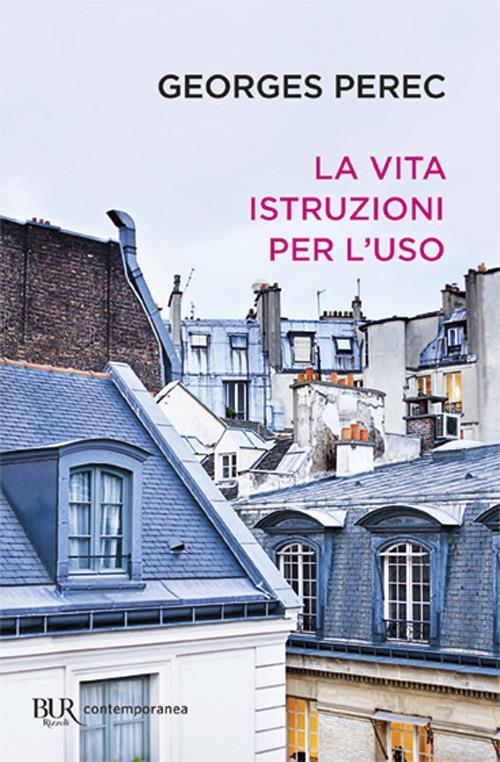
Ci sono tre persone nel piccolo salotto. Una di loro è una donna sulla quarantina; sta scendendo la scala che al ballatoio, indossa una tuta di cuoio nero e tiene porta in mano un pugnale orientale, delicatamente lavorato, che pulisce con una pelle di daino. La tradizione vuole che quello sia il pugnale di cui si sarebbe servito il fanatico Suleyman-el-Halebi per assassinare il generale Jean-Baptiste Kléber, al Cairo, il 14 giugno 1800, quando quel geniale stratega, lasciato sul posto da Bonaparte dopo il mezzo successo della campagna d'Egitto, aveva risposto all'ultimatum dell'ammiraglio Keith con la vittoria di Heliopolis.
Le altre due sono sedute sui pouf. È una coppia sulla sessantina. La donna indossa una gonna patchwork che le arriva alla rotula, e calze di rete nere a maglia molto larga; schiaccia la sigaretta macchiata di rosso in un portacenere di cristallo la cui forma ricorda una stella marina; l'uomo indossa un completo scuro a righine rosse, camicia azzurro chiaro, cravatta e fazzoletto in tinta, azzurri con diagonali rosse; capelli pepe e sale a spazzola; occhiali di tartaruga. Tiene sulle ginocchia un opuscolo con la copertina rossa intitolato Il Codice delle Tasse. La giovane donna in tuta di cuoio è la segretaria di Hutting. L'uomo e la donna sono dei clienti austriaci. Sono venuti apposta da Salisburgo per trattare l'acquisto di una delle più quotate Nebbie di Hutting, quella che ebbe come opera di partenza nientedimeno che Il bagno turco, provvisto, dal trattamento cui Hutting lo ha sottoposto, di una sovrabbondanza di vapore. Da lontano, l'opera somi- glia a un acquerello di Turner, Harbour near Tintagel, che più volte, all'epoca in cui gli dava lezioni, Valène mostrò a Bartlebooth come l'esempio più compiuto di quanto si si possa fare con l'acquerello.
Romanzo del 1978 Traduttore Dianella Selvatico Estense Pubblicato da Rizzoli Pagine 572
0 notes
Note
I loved the heist AU! I’m sure someone has already asked for Crimminal Intent, but if not, I’d love to read it!
Thank you for choosing from the DVD extras menu of Such Great Heists! Surprisingly, you're the first to ask for this one! I'm really glad you did because it was the only snippet I'd actually finished at the start of this exercise.
Crimminal Intent
“We need you on a job,” says Rebecca.
“For fuck’s sake, Rebecca!” yells Trent, tripping over a chair in his shock. “Stop breaking into people’s houses and sitting in the bloody dark till they come home and have a heart attack!”
“Sorry,” says Rebecca. She unrepentantly takes a sip of a cup of tea. Did she make that in the dark? Trent doesn’t even want to think about it. “It is something of an emergency, you see.”
“You could have called.”
“Oh, I don’t actually have your number,” says Rebecca. “Forgot to save it, I think. I know where you live though. We all do.”
“That,” says Trent, “is an incredibly creepy thing to say, and will in no way compel me to acquiesce to your request. I don’t do jobs. You know that.”
“You know I wouldn’t ask it if it wasn’t serious,” says Rebecca. “It’s Ted.”
Trent goes cold. “What happened?”
Rebecca sets her teacup down. “He got himself kidnapped.”
Trent walks past her in silence and opens his liquor cabinet. He pours himself a generous shot of whiskey and throws half of it back. Then he whirls on her.
“Should have fucking led with that, shouldn’t you?”
“Oh, I’m going about this all the wrong way,” huffs Rebecca. “Beard ought to be the one telling you, really, he was actually there - ”
“Where is Beard?”
“Well,” says Rebecca, “he got shot.”
It is a miracle Trent is still keeping hold of the glass. “Beard got shot?”
“Mildly,” Rebecca hastens to add. “Mildly shot.”
“I’m not a journalist or anything,” says Trent, “but if I were, then that is what I would call burying the fucking lede.”
Rebecca throws her hands up. “You know what? You should really hear it from him. He’ll explain it far better than I can.”
~~~
“I was mildly shot,” says Beard.
Trent gapes at him. Beard is lying in a hospital bed, peaceably reading Life: A User’s Manual. He does not appear visibly wounded. The patient’s tag above the bed identifies him as George Bartlebooth. Whenever a nurse or doctor is in the room, he speaks in a plummy RP accent, then reverts to American Midwestern when it’s just the three of them. It’s all giving Trent phonetic whiplash.
“But are you going to tell me where?”
“Nope,” says Beard, turning a page. “It’s delicate.”
Rebecca rolls her eyes. “Just go back to the part where Ted got kidnapped.”
“It was Earl,” says Beard. “You know Earl the Churl?”
“I can’t say I’ve had the pleasure,” says Trent. “He sounds delightful.”
“Well, turns out he knew us. We got made, mid-job. It all went kinda pear-shaped. I got shot, your boyfriend got himself kidnapped - ”
“He’s not my boyfriend,” says Trent automatically.
“Yes, yes, you’re just two people who are forever hanging out in museums platonically, whatever.” Rebecca rolls her eyes. “Anyway, Ted got kidnapped, and now Earl’s people won’t give him back unless we steal their rival’s Fabergé egg. They know the whole crew. We’d need a fresh face, someone who’s never been in the field.”
“So you want me to help you steal the egg,” hazards Trent.
“Oh, no, we’ll steal the egg,” says Rebecca. “That’s all sorted. You needn’t worry about that.”
“But we also don’t want to give the egg to Earl,” puts in Beard. “Ted wants it for other things.”
“Okay,” says Trent. “But then what do you need me for?”
Beard gives Trent a patient look, like he’s explaining the alphabet to a very stupid child. “You’re going to steal Ted.”
Trent takes a deep breath. “Fine. But you’re paying for my babysitter.”
#ted lasso#heist au#such great heists#ask game#trent crimm/ted lasso#ted x trent#trent crimm#rebecca welton#coach beard
65 notes
·
View notes
Text
Twelve Cautionary Urban Tales: Our Acts Make the City
The exhibition at Matadero Madrid, Twelve Cautionary Urban Tales, brings a fresh look into the (im)possible urban futures. It prompts us to wonder about individual actions – mundane or extraordinary, planned or accidental – and the ways in which they contribute towards building the city of tomorrow.



Celine Baumann’s Parliament of Plants; imagining a democracy based on the principle of mutual care and support. | Photo © Lukasz Michalak
It is interesting to write about it at this moment when, due to the Covid-19 pandemic, our urban experience is turned upside down. Right now most of us can do the most by completely retreating from city life and staying physically away from each other. And still, as we try to do this from afar but in unison, in solidarity, we already lay the groundwork for our shared future city. What could that city be? Take a look at the exhibition to delve into the cautionary tales.

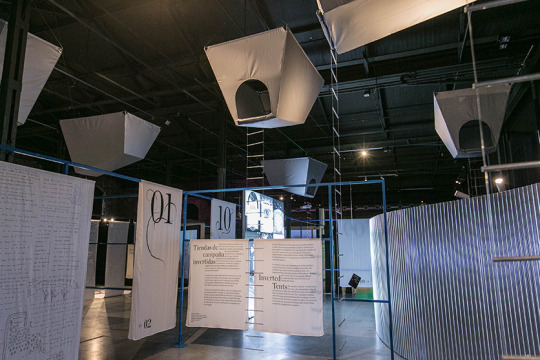

The first of twelve tales: Inverted Tents by Aristide Antonas, telling about a city fragmented into autonomous pieces | Photo © Lukasz Michalak
Twelve Cautionary Urban Tales, curated by Ethel Baraona Pohl, was opened on February 13 at Matadero Madrid. It consists of twelve cities – that is, twelve stories of cities – asking and teasing and urging us to think about the urban futures. Who do we really live with, in this big city, in this cyberspace, in this tiny room? How children play, and why is that important? Would plants make better parliamentarians than we do? What if we actually listened to the sound of injustice we keep imposing upon Earth? Is our first city in outer space going to reproduce the capitalist mode of production? Did you learn or do anything interesting yesterday?

Are the producers of happiness rankings the new designers of our cities? Our Happy Life: Architecture and Well-being in the Age of Emotional Capitalism curated by Francesco Garutti CCA. | Photo © Lukasz Michalak
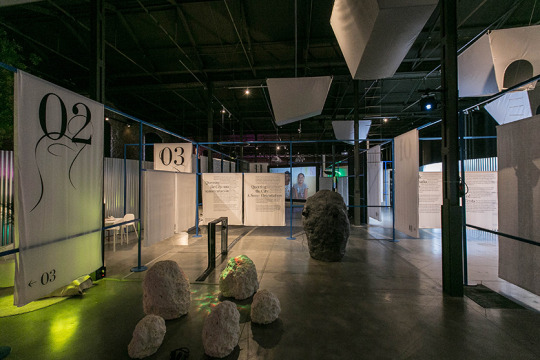

Queering the City is a sound installation with a range of works by artists invited by Katayoun Arian. Its content and connections are subject to rhythmic formations and deformations. | Photo © Lukasz Michalak
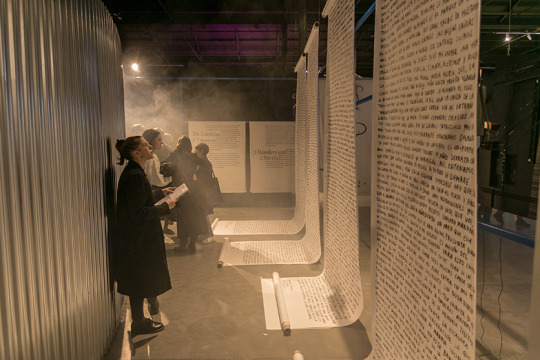
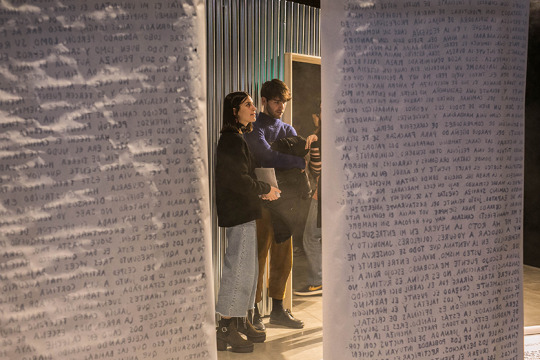
With the project 3 Wanders and 2 Strolls, Clara Nubiola explain the Madrid and its infrastructures that has grown from junctions, bridges, informal paths, illegal camps, and glass office buildings. | Photo © Lukasz Michalak
To make us stop and think about all of this and more, Ethel Baraona Pohl, the curator, critic, and the co-founder of dpr-barcelona publishing house, has brought together a variety of practices, from different fields and generations. Their artistic installations compose an exhibition inspired by Superstudio’s famous piece Twelve Cautionary Tales for Christmas, published in 1971 in Architectural Design. With these “twelve visions of ideal cities”, Superstudio gave an enduring lesson on the perils of modernist utopias, the dangers of perfectionism, and the illusion of happiness found in blissful ignorance and blind fate in technology.




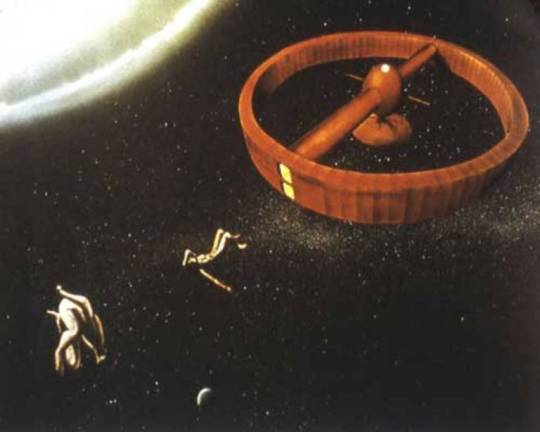
Superstudio’s ideal cities “free from contradiction, equivocation and indecision.” | Illustrations via arqueologiadelfuturo.blogspot.com
The influence of Superstudio’s radical work cannot be overstated, and the work itself should be studied and analyzed in the context of the critical debate of the 1960s and ‘70s. But it might be interesting to briefly remember some of the Superstudio’s sharp, unexpected, science-fiction inspired visions. Their first city might give you eternal life on a grid of perfect equality, but it will also crush you with a 2,000 tons panel if you so much as consider rebelling against the system. The eighth city, with its perfect proportions and terraces narrowing as they go up all the way to the mysterious top, is the embodiment of class exploitation. The tenth city solved the problem of democracy and public participation by reprogramming anyone who’d ever questioned any of the mayor’s decisions. And the sixth city, the one where you can pay to go in and be whoever you choose to be and do whatever you want to do, might have inspired the TV series Westworld. The issues at the center of Superstudio’s tales have not faded, and their provocative message still warns us, and rightfully so, about the limits of a mechanic, technological perfection which anesthetizes human imagination, and about the values of human action and contradiction.

Cosmorama is a version of one previously exhibited in 2018 at the US Pavilion at the 16th Venice Biennale by Design Earth. | Photo © Lukasz Michalak
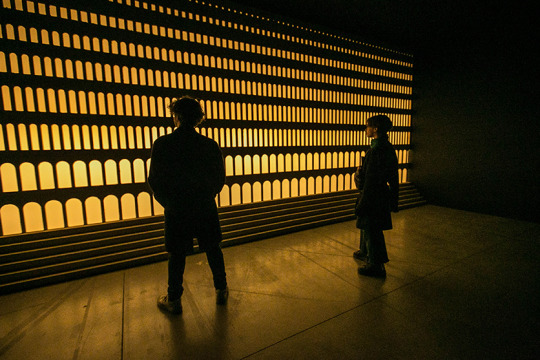

The Atom People by Traumnovelle, based on the machine-city, questions the paradox of contradictory relations that occur in nature when it is born from the search of ecology through technological means | Photo © Lukasz Michalak
Exhibition Twelve Cautionary Urban Tales furthers the conversation by putting human action front and center, to be either criticized, admired – or simply induced. These tales have grown into installations, which bring forward a set of questions about our relationship with nature, with each other, with architecture, with political and physical spaces we inhabit, and with those we (still) don’t. And we must come up with some answers: there’s no sleeping through the urban challenges we face today, there’s no one to take over the control panel of our joint existence. We are building our messy cities together, and look, hear, feel – this is where we might end up!

Guerrera video, filmed at the Automotive Museum by Eduardo Barreiros, is one of the works featured in the audiovisual archiving project Selling Bricks.
youtube
It addresses the relationship between urban music and an architectural object, the role of popular culture in the dissemination of architectural heritage.
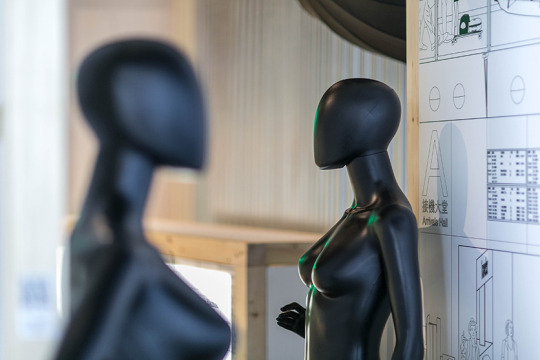
Unsettled Urbanism by Merve Bedir, Chong Suen, Sampson Wong is a call to understand how collective spatial intelligence is produced and the other ways of living the city that emerge. | Photo © Lukasz Michalak
The storytellers bringing their cautionary tales forward are Aristide Antonas with Inverted Tents, Katayoun Arian with Queering the City: A Sono-orientation (with artists Angela Anderson, Irene Cassarini, Karachi Beach Radio, and Gayatri Kodikal), MAIO Architects with The Grand Interior: Towards the Diffuse Home, Clara Nubiola with 3 Wanders and 2 Strolls, Traumnovelle with The Atom People, Celine Baumann with The Parliament of Plants, Chloé Rutzerveld with The Politics of Food: a Radical New Food System for the Anthropocene City, Bartlebooth with Selling Bricks (with Alberto de Miguel), Merve Bedir, Chong Suen and Sampson Wong with Unsettled Urbanism, Design Earth with Cosmorama, Assemble with The Voice of Children and Canadian Centre for Architecture (CCA) with Our Happy Life: Architecture and Well-being in the Age of Emotional Capitalism curated by Francesco Garutti.

Exhibition closes with a final call back to Superstudio. We’re still working out the same questions! | Photo © Lukasz Michalak
Exhibition at Matadero Madrid shall be set until July 19, 2020. Although Matadero is, like the museums and galleries all over the world, currently closed, the exhibition can still be viewed online.
- by Sonja Dragović
---
Twelve Cautionary Urban Tales Matadero Madrid, Center for Contemporary Creation Plaza de Legazpi 8, Madrid
From 13 of February to 19 of July 19 2020
Curator: Ethel Baraona Pohl Curatorial advisor: César Reyes Exhibition design: Taller de Casquería Graphic design: Naranjo-Etxeberría
57 notes
·
View notes
Photo
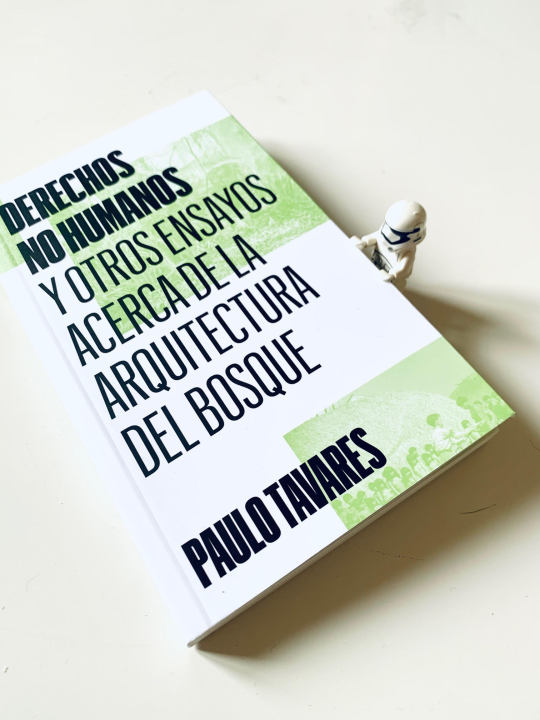
Derechos no humanos y otros ensayos acerca de la arquitectura del bosque. Paulo Tavares Bartlebooth [2022]
Más info: Bartlebooth
1 note
·
View note
Text
Entrevista a Moisés Puente · Puente editores
Tras unas semanas de reclusión debido a la pandemia provocada por el COVID-19, hemos aprovechado para charlar con el arquitecto Moisés Puente, actualmente afincado en Barcelona, sobre su labor como editor y su proyecto editorial independiente Puente editores que publica libros de teoría y crítica de la arquitectura y del arte y que pretende servir de plataforma para proyectos independientes.
[...]
Moisés Puente · Puente editores Junio 2020
Entrevista realizada por Ana Barreiro Blanco y Alberto Alonso Oro. Agradecer a Moisés su tiempo y predisposición con este pequeño espacio.
#2G#AA Publications#Alberto Alonso Oro#Aldo Rossi#Alejandro de la Sota#Alias editorial#Ana Barreiro Blanco#Andrés Jaque#Andrés Jaque Architects#arquitectura española#baliza#bartlebooth mag#Beatriz Colomina#Black Square#Caja Negra editorial#caniche editorial#crítica#editorial#editorial consonni#editorial Gustavo Gili#editorial tenov#editorial Walther KönigWalther König#el croquis#fundación Alejandro de la Sota#Josep Llinàs#joven arquitecto#Jørn Utzon#kersten geers#libro#modelo profesional
0 notes
Text
Life: A User’s Manual by Georges Perec, translated by David Bellos
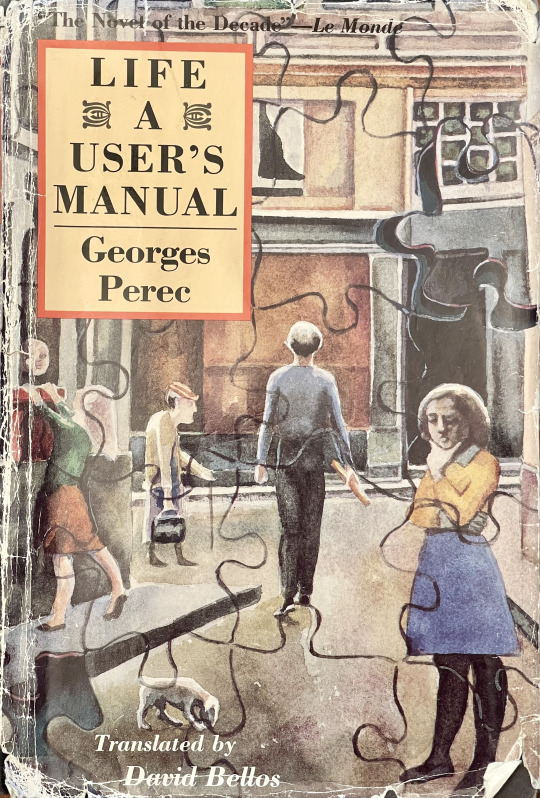
Let us imagine a man whose wealth is equalled only by his indifference to what wealth generally brings, a man of exceptional arrogance who wishes to fix, to describe, and to exhaust not the whole world — merely to state such an ambition is enough to invalidate it — but a constituted fragment of the world: in the face of the inextricable incoherence of things, he will set out to execute a (necessarily limited) programme right the way through, in all its irreducible, intact entirety.
In other words, Bartlebooth resolved one day that his whole life would be organised around a single project, an arbitrarily constrained programme with no purpose outside its own completion.
The idea occurred to him when he was twenty. At first it was only a vague idea, a question looming — what should I do? — with an answer taking shape: nothing. Money, power, art, women did not interest Bartlebooth. Nor did science, nor even gambling. There were only neckties and horses that just about did, or, to put it another way, beneath these futile illustrations (but thousands of people do order their lives effectively around their ties, and far greater numbers do so around their weekend horse-riding) there stirred, dimly, a certain idea of perfection.
It grew over the following months and came to rest on three guiding principles.
The first was moral: the plan should not have to do with an exploit or record, it would be neither a peak to scale nor an ocean floor to reach. What Bartlebooth would do would not be heroic, or spectacular; it would be something simple and discreet, difficult of course but not impossibly so, controlled from start to finish and conversely controlling every detail of the life of the man engaged upon it.
The second was logical: all recourse to chance would be ruled out, and the project would make time and space serve as the abstract coordinates plotting the ineluctable recursion of identical events occurring inexorably in their allotted places, on their allotted dates.
The third was aesthetic: the plan would be useless, since gratuitousness was the sole guarantor of its rigour, and would destroy itself as it proceeded; its perfection would be circular: a series of events which when concatenated nullify each other: starting from nothing, passing through precise operations on finished objects, Bartlebooth would end up with nothing.
Thus a concrete programme was designed, which can be stated succinctly as follows.
For ten years, from 1925 to 1935, Bartlebooth would acquire the art of painting watercolours.
For twenty years, from 1935 to 1955, he would travel the world, painting, at a rate of one watercolour each fortnight, five hundred seascapes of identical format (royal, 6scm x socm) depicting seaports. When each view was done, he would dispatch it to a specialist craftsman (Gaspard Winkler), who would glue it to a thin wooden backing board and cut it into a jigsaw puzzle of seven hundred and fifty pieces.
For twenty years, from 1955 to 1975, Bartlebooth, on his return to France, would reassemble the jigsaw puzzles in order, at a rate, once again, of one puzzle a fortnight. As each puzzle was finished, the seascape would be "retexturised' so that it could be removed from its backing, returned to the place where it had been painted — twenty years before — and dipped in a detergent solution whence would emerge a clean and unmarked sheet of Whatman paper.
Thus no trace would remain of an operation which would have been, throughout a period of fifty years, the sole motivation and unique activity of its author. (pp. 117-19)
***
Fortunately, it was more usual tor Bartlebooth, at the end of such hours of waiting, having gone through every stage of controlled anxiety and exasperation, to reach a kind of ecstasy, a stasis, a sort of utterly oriental stupor, akin, perhaps, to the state archers strive to reach: profound oblivion of the body and the target, a mental void, a completely blank, receptive, and flexible mind, an attentiveness that remained total, but which was disengaged from the vicissitudes of being, from the contingent details of the puzzle and its maker's snares. In moments like that Bartlebooth could see without looking how the delicate outlines of the jigsawed wood slotted very precisely into each other, and taking two pieces he had ignored until then or which perhaps he had sworn could not possibly join, he was able to fit them together in one go.
This intimation of grace would sometimes last for several minutes, which made Bartlebooth feel as if he had second sight: he could perceive everything, understand everything, he could have seen grass grow, lightning strike a tree, erosion grind down a mountain like a pyramid very gradually worn away by the gentle brushing of a bird's wing: he would juxtapose the pieces at full speed, without error, espying, beneath all the details and subterfuges intended to obscure them, this minute claw or that imperceptible red thread or a black-edged notch, which all ought to have indicated the solution from the start, had he but had eyes to see: in a few instants, borne along by such exalted and heady self-assurance, a situation that hadn't shifted for hours or days, a situation that he could no longer even imagine untying, would be altered beyond recognition: whole areas would join up, sky and sea would recover their correct locations, tree trunks would turn back into branches, vague birds back into the shadows of seaweed.
These privileged instants were as rare as they were intoxicating, as fleeting as they were seemingly effective. Bartlebooth would soon revert to being a sandbag, a lifeless lump chained to his worktable, a blank-eyed subnormal, unable to see, waiting hours without knowing what he was waiting for. (pp. 338-39)
***
Je cherche en même temps l’éternel et l’éphémère (p. 493)
1 note
·
View note
Photo
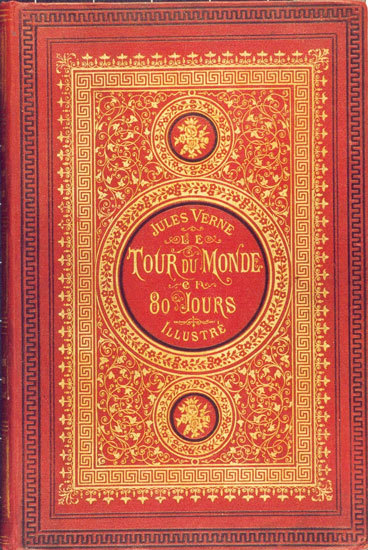

Dienstbodenkamertjes 5 Smautf.
“Smautf is al meer dan vijftig jaar bij Bartlebooth in dienst. Al betitelt hij zichzelf als butler, zijn bezigheden zijn meer die van een kamerdienaar of een secretaris; of nog preciezer gezegd, van zowel de een als de ander: in feite was hij voorval zijn reisgezel, zijn factotum en, zo niet zijn Sancho Panza, dan toch zijn Passepartout (want er zat iets van Phileas Fogg in Bartlebooth), beurtelings kruier, borstelaar, barbier, chauffeur, gids, betaalmeester, reisagent en parapluvasthouder.”
0 notes
Video
vimeo
QT.bot (2019), Lucas LaRochelle
“Datos queer” → los datos se disfrazan como fijos y objetivos, mientras que queer significa fluidez y multiplicidad. Un enfoque queer de los datos tendría el compromiso de deshacer los propios cimientos de afirmación de objetividad del Big Data en un esfuerzo por privilegiar lo anecdótico, situado, encarnado y los múltiples modos de conocimiento. ¿Cómo podríamos enrarecer la supuesta “objetividad” de los datos revelando sus incoherencias y, a su vez imaginar nuevos mundos a través de su lente oblicua? […] ¿Cómo podríamos podríamos apropiarnos de la IA con fines queer en busca de la opacidad?
Un modo de resistir la llamada de “dar sentido”, de que sea legible, al enfocarse al éxtasis de la opacidad.
QT.bot genera futuros queer especulativos y los ambientes en los que ocurren. […] Revelando el potencial del fallo, del caos y de la inconmensurabilidad de un uso queer de las tecnologías de machine-learning.
QT.bot fabula con las ausencias en el archivo, orientándose lejos de lo que es, o ha sido, sino hacia qué podría ser.
Generar destellos de futuros que surgen en el punto en el cual “las singularidades fluyen hacia lo común”.
Desorientación – tiempo, espacio y subjetividad colapsa, produciendo múltiples visiones de los muchos mundos contenidos en los datos.
El éxtasis de estar-juntos-en-diferencia.
Lucas LaRochelle (2020), QT.Bot, Disidencia sexual desde la vulnerabilidad y la resistencia, Atlas Menor, Madrid: Bartlebooth.
0 notes
Photo
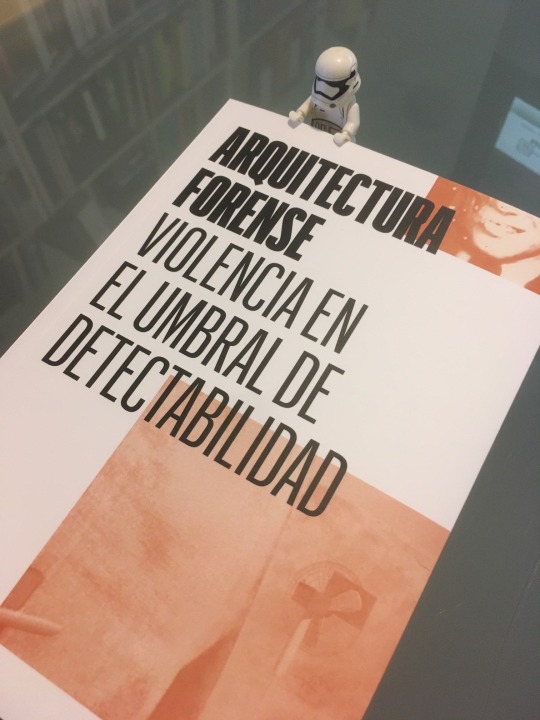
Arquitectura forense: violencia en el umbral de detectabilidad. Eyal Weizman Bartlebooth [2020] More info: Bartlebooth
0 notes
Photo

“he wanted, so he said, to sort the labels into order, but it was very difficult, of course there was chronological order, but he found it poor, even poorer than alphabetical order. He had tried by continents, then by country, but that didn’t satisfy him. What he would have liked would be to link each label the next, but each in respect of something else: for example. they could have some detail in commons mountain or volcano, an illuminated bay, some particular flower, the same red and gold edging, the beaming face of a groom, or the same dimensions, or the same typeface, or similar slogans (“Pearl of the Ocean,” “Diamond of the Coast”), or a relationship based not on similarity but on opposition or a fragile, almost arbitrary association: a minute village by an Italian lake followed by the skyscrapter of Manhattan, skiers followed by swimmers, fireworks by candlelit dinner, railway by aeroplane, baccarat table by chemin de fer, etc. It’s not just hard, Winckler added, above all it’s useless: if you leave the labels unsorted and take two at random, you can be sure they’ll have at least three things in common. After a few weeks he put the labels back in the shoebox where he kept them and tidied the box away in the back of his cupboard. He did not work on anything special again.”
“Let us imagine a man whose wealth was equalled only by his indifference to what wealth generally brings, a man of exceptional arrogance who wishes to fix, to describe and to exhaust not the whole world – merely to state such an ambition is enough to invalidate it – but a constituted fragment of the world: in the fact of the inextricable incoherence of things, he will set out to execute a (necessarily limited) programme right the way through, in all its irreducible intact entirety. In other words, Bartlebooth resolved one day that his whole life would be organised around a single project, an arbitrarily constrained programme with no purpose outside its own completion. The idea occurred to him when he was twenty. At first it was only a vague idea, a question looming — what should I do? — with an answer taking shape: nothing. Money, power, art, women did not interest Bartlebooth. Nor did science, nor even gambling. There were only neckties and horses that just about did, or, to put it another way, beneath these futile illustrations (but thousands of people do order their lives effectively around their ties, and far greater numbers do so around their weekend horse-riding) there stirred, dimly, a certain idea of perfection. It grew over the following months and came to rest on three guiding principles. . The first was moral: the plan should not have to do with an exploit or record, it would be neither a peak to scale nor an ocean floor to reach. What Bartlebooth would do would not be heroic, or spectacular; it would be something simple and discreet, difficult of course but not impossibly so, controlled from start to finish and conversely controlling every detail of the life of the man engaged upon it. . The second was logical: all recourse to chance would be ruled out, and the project would make time and space serve as the abstract coordinates plotting the ineluctable recursion of identical events occurring inexorably in their allotted places, on their allotted dates. . The third was aesthetic: the plan would be useless, since gratuitousness was the sole guarantor of its rigour, and would destroy itself as it proceeded; its perfection would be circular: a series of events which when concatenated nullify each other: starting from nothing, passing through precise operations on finished objects, Bartlebooth would end up with nothing. . Thus a concrete programme was designed, which can be stated succinctly as follows. For ten years, from 1925 to 1935, Bartlebooth would acquire the art of painting watercolours. For twenty years, from 1935 to 1955, he would travel the world, painting, at a rate of one watercolour each fortnight, five hundred seascapes of identical format (royal, 65 cm × 50 cm) depicting seaports. When each was done, he would dispatch it to a specialist craftsman (Gaspard Winckler), who would glue it to a thin wooden backing board and cut it into a jigsaw puzzle of seven hundred and fifty pieces. For twenty years, from 1955 to 1975, Bartlebooth, on his return to France, would reassemble the jigsaw puzzles in order, at a rate, once again, of one puzzle a fortnight. As each puzzle was finished, the seascape would be “retexturised” so that it could be removed from its backing, returned to the place where it had been painted — twenty years before — and dipped in a detergent solution whence would emerge a clean and unmarked sheet of Whatman paper. Thus no trace would remain of an operation which would have been, throughout a period of fifty years, the sole motivation and unique activity of its author.”
“Once again his head began to whirl with the sad round of removers and undertakers, property agents and their customers, plumbers, electricians, painters, decorators, tilers and carpet-layers: he began to think of the tranquil life of things, of crockery chests full of wood shavings, or cartons of books, of the harsh light of bare bulbs shining on their wires, of the slow installation of furniture and objects, of the slow adaptation of the body to space, that whole sum of minute, nonexistent, untellable events-choosing a lamp-stand, a reproduction, a knick-knack, placing a tall rectangular mirror between two doors, putting a Japanese garden in front of a window, lining cupboard shelves with a flower-printed fabric- all those infinitesimal gestures in which the life of a flat is always most faithfully encapsulated and which will be upset from time to time by the sudden- unforeseen or ineluctable, tragic or benign, ephemeral or definitive- fractures of an ahistorical daily grind: one day the young Marquiseaux girl will run off with the Reol boy, one day Madame Orlowska will leave again for no apparent reason, for no real reason either; one day Madame Altamont will fire a revolver at Monsieur Altamont and the blood will spurt onto the glazed hexagonal tiles of their octagonal dining room; one day the police will come to arrest Joseph Nieto and will find hidden in on e of the brass spheres on his large Empire bedstead in his bedroom the famous diamond stolen long ago from Prince Luigi Voudzoi. One day, above all , the whole house will disappear, the street and the quartier will die. That will take time to happen. To begin with, it will seem like a legend or a barely plausible rumour: someone will have heard something about a possible extension of the Monceau Gardens, or a plan for a big hotel, or a direct link from the Elysée palace to Roissy airport using the line of the Avenue de Courcelles to get to the ring road. Then the rumours will harden; the names of the developers will become known, as will the precise nature of their plans, illustrated in expensive, four-colour-printed fold outs...”
chapter 29 description of party debris including; a false nose, slightly gnawed lumps of bread, crimped paper boats that have used for petits four, an almost entire pat of butter in which several cigarettes have been neatly crushed, creme de banane, hairpins, balancing on a radiator there is a big Japanese lacquered-wood salad bowl with a bit of rice salad left in it, a remnant of lettuce gone sour perch near the top of a book case, the remains of an elaborate part cake - a huge meringue in the shape of a squirrel- are precariously wedged between two folds in one the carpets, one pot of strong mustard spilt on Yvette Horner’s golden disc, and a bottle of vodka broken in a plant pot containing a fragile papyrus which will surely not recover...
“I wore rings encrusted with particular stones, I had magnets and hanged men’s fingernails and tiny bottle of herbs, seeds and coloured stoned sewn into the hems of my clothes; I consulted wizards and water diviners, fortune tellers and crystal-ball gazers and soothsayers of all sorts; they threw dice, or burnt a photograph of your daughter in a white porcelain plate and examined the ash, they rubbed their left arms with fresh verbena leaves, put hyenas’ gallstones under their tongues, spread flour on the floor, made unending anagrams of your daughter’s names and pseudonyms, or replaced the letters of her name with figures in an attempt to reach 253, examined candle flames through vases filled with water, threw salt into fire and listened to the crackling,or jasmine seed or laurel branches to watch the smoke, poured the white of an egg laid by a black hen into a cup of water, or dropped in lead, or molten wax, and watched the shapes that were made, they had sheep’s shoulder blades grilled on hot coals, hung sieves on wire and rotated them, examined carp roes, asses’ brains and circles of grain pecked by a rooster.”
“..two doorstep salesmen. The first is selling a New Key to Your dreams, allegedly based on the teachings of a Yaqui sorcerer collected at the end of the seventeenth century by an English traveller named Henry Barrett, but actually composed a few weeks earlier by a botany student at Madrid University. Apart from the anachronisms without which this key to dreams would obviously unlock nothing at all, and the ornamentation with which the Spaniard’s imagination had sough to embellish this tiresome enumeration by emphasising its chronological and geographical exoticism, several of the suggested associations turn out be surprisingly rich:
BEAR = CLOCK WIG = ARMCHAIR HERRING = CLIFF HAMMER = DESERT SNOW = HAT MOON = SHOE FOG = ASH COPPER = TELEPHONE HAM = SINGLE PERSON”
“artists for whom life must necessarily be inscribed within these tiny rooms where there is space only for a bed, a cupboard, and a stack of shelves for jars of jam with which to eke out the days before the next pay cheque.”
“the Altamonts will never miss an opportunity of recalling that in the seventeenth century, painters, writers, and musicians were only valets with a specialist, just like perfumers, hairdressers, dressmakers and restaurateurs still were in the nineteenth century, who today are destined to reach fame as well as fortune, although one can see how dressmakers or restaurateurs could become businessmen, even industrialists, by their own efforts, an artist, on the other hand, could never cease to be dependent on middle-class need. This vision of things, magnificently set out in 1879 in Edmond About’s Workers ABC, where he calculates without a hint of irony that when Mademoiselle Patti (1843-1919) goes to sing in a financier’s drawing room, she produces, on opening her mouth, the equivalent of forty tons of cast iron at fifty francs per thousand kilos, this vision of things is obviously not shared by all the inhabitants of the building.”
“Sometimes Valène dreamt of cataclysms and tempests, of whirlwinds that would carry the whole house off like a wisp of strand display the infinite marvels of the solar system to its shipwrecked inhabitants; or that an unseen crack would run through the building from top to bottom, like a shiver, and with a long, deep snapping sound it would open in two and be slowly swallowed up by a indescribable yawing chasm, then hordes would overrun it, bleary-eyed monsters, giant insects with steel mandibles, blind termites, great white worms with insatiable mouths, the wood would crumble, the stone would turn to stand, the cupboard would collapse under their own weight, all would return to dust. But no. These shabby squabbles over buckets and tubs, over matches and sinks. And behind that ever-closed door the morbid gloom of that slow revenue, that ponderous business of two senile monomaniacs churning over their feigned histories and their wretched traps and snares.”
“Then came the period of his long walks around Paris. He let himself wander, going wherever the whim took him, plunging into the five-o’clock bustle of office workers. He trailed along shopfronts, went into all the art galleries, walked slowly through the arcades in the IXth arrondissement, stopping at every store. He stared with equal attention at rustic washstands in furniture stores, bedheads and spiring in mattress-maker’s windows, artificial wreaths in under-takers’ shopfronts, curtain rails in haberdasheries, “erotic” playing cards with macromammaried pin-ups in novelty stores ..the yellowing photographs advertising Art Studios: a moon-faced urchin in a vulgarly-cut sailor suit, an ugly boy in a cricket cap, a pug-nosed youth, a rather repellent bulldog type of man by a brand-new car; in a pork-butcher’s Chartres Cathedral in lard; the humorous visiting cards in a joke-shop window display....Sometimes he invented ridiculous constraints for himself, such as listing all the Russian restaurants in the XVIIth arrondissement or working out a itinerary which would pass bu each one without ever crossing over its own track, but usually he chose a trivial target- the one hundred and forty-seventh bench, the high thousand two hundred and thirty-seventh step, and he would spend several hours sitting on the green slats of the bench with its cast-iron lion-paw ferrules somewhere near Denfert-Rochereau or Chateau-Landon, or stand stock still like a statue in front of a shop-fitter’s shop”
“whilst other compilers sought out new words and meanings, his job was to make room for them by eliminating all the words and meanings that had fallen into disuse. When he retired in nineteen sixty-five, after fifty-three years of scrupulous service, he had disposed of hundreds and thousands of tools, techniques, customs, beliefs, sayings, dishes, games, nick-names, weights and measures; he had wiped dozens of islands, hundreds of cities and rivers, and thousands of townships off the map, he had returned to taxonomic anonymity hundreds of varieties of cattle, species of birds, insects, and snakes, rather special sorts of dish, kinds of crustaceans, slightly dissimilar plants and particular breeds of vegetables and fruit; and cohorts of geographers, missionaries, entomologists, Church Fathers, men of letters, generals, Gods & Demons had been swept by his hand into eternal obscurity.” (he then spends retirement compiling a dictionary of rare words)
“Olivier Gratiolet has undertaken an exhaustive inventory of all the imperfections and inadequacies to which the human organism is heir: vertical posture, for example, gives man only a precarious balance: muscular tension alone keeps him upright, thus causing constant fatigue and discomfort in the spinal column, which, although sixteen times stronger than it would have been were it straight, does not allow man to carry a meaningful weight on his back; feet ought to be broader, more spread out, more specifically suited to locomotion, whereas what he has are only atrophied hands deprived of prehensile ability; legs are not sturdy enough to bear the body’s weight, which makes them bend, and moreover they are a strain on the heart, which has to pump blood about three feet up, whence come swollen feet, varicose veins, etc.; hip joints are fragile and constantly prone to arthrosis or serious fractures; arms are atrophied and too slender; hands are frail, especially the little finger, which has no use, the stomach has no protection whatsoever, no more than the genitals do; the neck is rigid and limits rotation of the head, the teeth do not allow food to be grasped from the sides, the sense of smell is virtually nil, night vision is less than mediocre, hearing is very inadequate; man’s hairless and unfurred body affords no protection against cold, and, in sum, of all the animals of creation, man, who is generally considered the ultimate fruit of evolution, is the most naked of all.”
“For some months Hutting used a method which, he said, had been revealed to him for three rounds of gin by a half-caste beggar he had met in a scruffy bar on Long Island but who wouldn't reveal its origin despite all Hurting's insistence. It involved selecting the colours for a portrait from an inalterable sequence of 11 hues by use of three key numbers, one provided by the date and time of the painting’s “birth”, “birth” meaning the first sitting for the painting, the second by the phase of the moon at the painting’s “conception”, “conception” meaning the circumstances which had initiated the portrait, for instance a telephone call asking for it to be done, and the third by the price.”
‘Bartlebooth often found - as in children’s solid-wood puzzles- that he had a whole menagerie, a python, a mountain cat, and two fully formed elephants, one of the African (long-eared) variety, the other Indian,ora Charlie Chaplin (bowler hat, stick, and bandy legs), a long-nosed profile of Cyrano de Bergerac, a gnome, a witch, a lady in a wimple, a saxophone, a coffee table, a roast chicken, a lobster, a champagne bottle, the dancing girl on the front of Gitane cigarette packs or the winged helmet of Gauloises, a hand, a tibia, a fleur-de-lys, various fruits, or an alphabet, almost entire, with pieces shapes like J,K, L, M, W, Z, X, Y and T.
0 notes